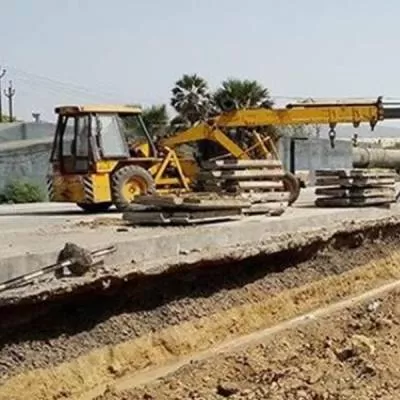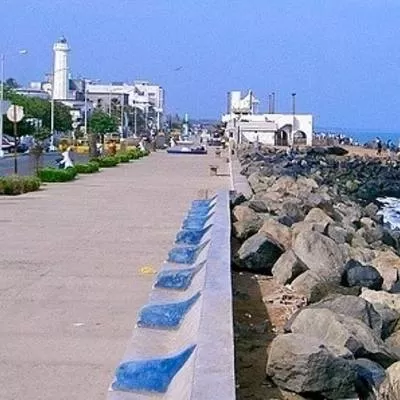Schedule a Call Back
Airport projects need to be self-sustainable
Are your capex plans to create additional airport capacity over a five-year period on track?
Yes, the plans are on track. We have planned capex close to the tune of Rs 250 billion over a period of five years for the development of airports, upgradation of air navigation services infrastructure and provision of new technologies and equipment, cargo facilities, and associated infrastructure. We recently completed airports at Vadodara, Vijayawada, Jammu, Hubli, Belgaum, Kishangarh, Jharsuguda and a greenfield airport at Pakyong. Infrastructure development works are in progress at Port Blair, Agartala, Guwahati, Chennai, Lucknow, Dehradun, Leh, Allahabad, Tiruchirappalli, Pune, Patna and Kolhapur. New terminal buildings are planned at Jaipur, Srinagar, Jabalpur, Vijayawada, Agra, Indore, Surat, Goa, Ahmedabad, Adampur, Bareilly, Bihta and Bhubaneswar. New airport projects are planned to be undertaken at Deoghar, Hirasar and Dholera.
Aviation experts say that there is a need to develop airports as self-sustainable units to ensure they achieve break-even to become profitable in order to revive public-private partnership (PPP) projects in the sector. How far do you agree with this assessment?
Yes, it is true from the investor's perspective. Development of airports is capital extensive and involves long gestation periods. The airports should be self-sustaining in their development, operation and maintenance so as to deliver tangible benefits to each of the stakeholders involved. The private investors under PPP will be attracted to airports with established revenue streams and assured profits. However, AAI takes up airports not only on commercial considerations but also to uplift the socio-economic status of the area and the region, and also to provide vital connectivity to remote areas.
By when will the Digi Yatra project, aimed at reducing the processing time at airports through faster check-ins and security clearances, commence?
The policy document for Digi Yatra has been released by the government. It ensures seamless access to airports based on the biometric authentication of passengers. The Civil Aviation Requirements (CAR) for implementing the Digi Yatra at individual airports has been issued by the Directorate General of Civil Aviation (DGCA). The proof of concept (POC) is planned by Bengaluru International Airport (BIAL), Hyderabad Rajiv Gandhi International Airport (HIAL) and AAI. The AAI has plans to implement Digi Yatra at four airports under its management, namely Kolkata, Vijayawada, Varanasi and Pune in the first phase. It is expected that the services may be rolled out at these airports by July 2019. The administration and governance of the system will be undertaken through a centralised platform under a joint venture company composed of all private airport operators and AAI. Steps are underway to register a new company.
You recently inked an agreement with the United States Trade and Development Agency (USTDA) to develop a roadmap for modernisation of air traffic services. What are the principal areas that you would be working on with the agency?
The roadmap for modernisation of air traffic services under the USTDA agreement will include recommendations for communication, navigation, surveillance or air traffic management (CNS/ATM) equipage in the air and on the ground, regulatory changes to support new equipage, and alignment with global and regional initiatives to support the expansion and growth of the Indian commercial aviation industry. Near, mid and long-range recommendations along with economic evaluations will be outlined. The project shall analyse current technologies and processes to identify potential efficiency improvements that could be implemented even while maintaining a practical and safe national airspace system. The modernisation roadmap will provide AAI clear visibility into how India's aviation system is performing relative to international standards.
The CNS/ATM modernisation roadmap shall focus on identifying the specific systems, technologies, equipment and infrastructure necessary for their modernisation. It would also include integrated plans for technology deployment for the various stakeholders and systems and technologies such as commu?nication, navigation, surveillance, decision support tools, avionics upgrade and integration, and emerging technologies such as remotely piloted airborne systems and rotorcrafts.
The launch of Pakyong Airport in Sikkim in October 2018 was one of AAI's most significant achievements in 2018. What is on the cards in the year ahead?
Some of the major airports likely to be completed in this year are Allahabad New Civil Enclave (CE), Agartala, Darbhanga New CE and Bareilly New CE. Besides, a number of airports belonging to state governments, private parties and defence services are likely to be operationalised under the Regional Connectivity Scheme-Ude Desh Ka Aam Nagrik (RCS-Udan).
Recently completed airport
- Vadodara
- Vijayawada
- Jammu
- Hubli
- Belgaum
- Kishangarh
- Jharsuguda
- Pakyonglong
Infrastructure work in progress
- Port Blair
- Agartala
- Guwahati
- Chennai
- Lucknow
- Dehradun
- Leh
- Allahabad
- Tiruchirappalli
- Pune
- Patna
- Kolhapur
Upcoming terminal buildings
- Jaipur
- Srinagar
- Jabalpur
- Vijayawada
- Agra
- Indore
- Surat
- Goa
- Ahmedabad
- Adampur
- Bareilly
- Bihta
- Bhubaneswar
- Manish Pant


Subscribe Now
Subscribe to our Newsletter & Stay updated
RECENT POSTS
Popular Tags
Folliow us











